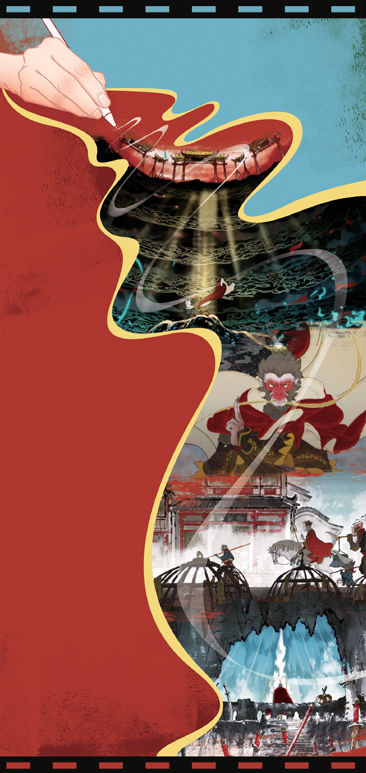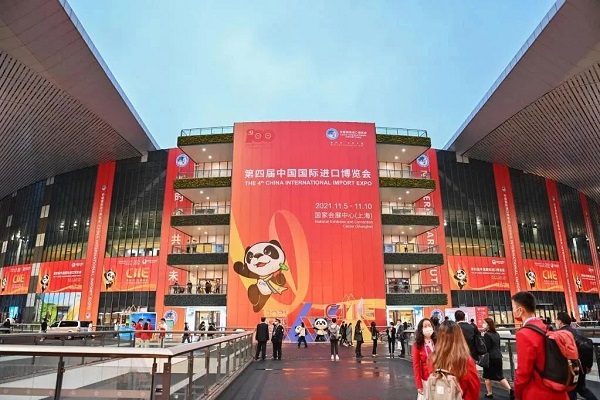animating tradition
unfinished, the animated finale of black myth: wukong, resonates with audiences worldwide.
the first chinese aaa game, black myth: wukong, inspired by the classic novel journey to the west, has become a global sensation since its release in august this year. every aspect of the game — from its music and songs to its animations — has been in the spotlight, including unfinished, the ending clip of chapter six, and its director yang tingmu.
"i've watched several reaction videos from international fans, and i was surprised to see that many of them were moved to tears," said yang, founder of fantasier animation.
for him, the ability of something so inherently chinese to resonate with global audiences lies in the uniqueness of the animation.
"when you truly incorporate your emotions and cultural identity as a chinese person, this sentiment can reach foreigners too. even if they aren't familiar with the story of journey to the west or the visual style we used, they can sense that the product is cohesive in every aspect and feel emotionally connected to it," he explained.

scenes from unfinished, the animated finale of black myth: wukong. [photo provided to china daily]
yang credits the success of the clip and its reflection of chinese culture to a collaborative effort: the dialogue is taken from the original novel, the music is inspired by the theme song of the 1986 tv adaptation of journey to the west, and the character wukong is influenced by its peking opera portrayal.
however, the unique animation of the chinese lianhuanhua (palm-sized comic books) is solely the work of yang and his team. they initially explored various painting styles, including traditional chinese water and ink, before ultimately choosing the lianhuanhua aesthetic.
"lianhuanhua-style illustrations are familiar to most chinese people, but no one has seen them animated before," yang noted. "this blend of familiarity and novelty creates a unique effect."
yang conducted extensive research, drawing inspiration primarily from traditional baimiao, or ink line drawing. one of his main sources was the work of li gonglin (1049-1106), a northern song dynasty painter renowned for this technique.
"my goal is to restore the ancient essence of journey to the west," yang explained. "i wanted to steer clear of contemporary animation techniques, and li gonglin's style was exactly what i needed."
yang was also deeply inspired by the murals in dunhuang, gansu province, which he studied to capture intricate details, like the folds in clothing. another major influence was the artist dai dunbang, who created an entire set of artworks based on journey to the west.
"i have several of dai's painting albums and would carefully study how he uses specific symbols and images in his work," yang said.
even with thorough research and preparation, the project remained challenging for yang and his team, as they were not only reviving a traditional style but also pioneering a new approach: animating lianhuanhua.
yang described how his team was "building a new animation technique from scratch". one example was animating a large cluster of auspicious clouds, something never attempted before. according to yang, the final version of the clouds features multiple circular lines that rotate independently, with the overall outline moving alongside the inner circles. this creates a dynamic effect as cloud clusters merge, separate, and then merge again.
"while it may appear to be a single pattern, it actually contains many layers of motion, making this technique a breakthrough for us," explained yang.
illustrating animals like snakes, turtles, and chickens pecking at grain also presented challenges for yang and his team. despite their industry experience, it was their first time animating some of these animals.
"we looked for references from books and videos, and some team members even visited the zoo. we needed to see the actual animals and capture their appearances from different angles before bringing them to life in animation," yang said.
as unfinished received attention and praise, many netizens suggested that if expanded into a feature-length film, it could become the next "classic". yang's response was practical. he noted that his combined team of about 70 people took six months to complete the later production stages for the short film. "creating a full-length film would require two to three hundred staff," he said.
he added that innovative techniques, like the new movement patterns, are mastered by only a small number of specialists. "making short films is like using experimental technology in a lab, not yet ready for mass production," yang explained. "while we've developed the method in a lab setting, scaling it up would pose numerous challenges — standardization issues, a limited pool of skilled personnel, and the training of a larger talent base are all practical obstacles."
however, he is optimistic about the broader animation industry. he highlighted that over the past decade, chinese animation has made huge progress.
"in 3d technology, we're second globally, behind only the united states. in 2d, we're just behind japan. this means that in the lab environment of short film animation, we're quite strong," he said.
yang pointed out that japanese animation stands out because of its mature and well-established industry, with standardization across all areas and a deep talent pool.
"for feature-length films, we need a much larger talent base. this is the reality for china's animation industry: a handful of skilled artists isn't enough — we need a fully developed ecosystem of talent," he said.
-
over 43,000 zhejiang buyers ready for $5 billion spending at upcoming ciie
october 30, 2024
-
hangzhou's gdp surpasses 1.5 trillion yuan in q3
october 25, 2024
-
fuchun river sparks impromptu poetry on shared human emotions
october 24, 2024
-
on board g8388: lost in the qiandao lake — a unique aerial island maze
september 29, 2024

